For many of us, the best visualization of our martech stacks are the icons in our bookmarks folders, but the creative stack managers among us see things like farms, desert islands and, yes, even a pizza.
That’s because it’s Stackie Awards season, and on Thursday Scott Brinker unveiled this year’s winners at the virtual MarTech conference.
For those unfamiliar, the annual awards program asks marketing technologists to create a single presentation slide that creatively visualizes the components of their martech stacks and how they relate to one another.
Click here to watch the session (free registration required)
“You do not get points for having a massive stack, that is not the point of this,” said Brinker. “The point is to talk about sharing examples of real stacks that real companies use.”
Even further, the best among this year’s 51 entries illustrated the impact of marketing technology beyond the organizational walls.
“One thing that stood out to me was … they don’t just tell you which solutions they’re using, but they diagram the stack in such a way that you got a feel for their thinking for the way it relates to their customer journey, and the way they’re guiding the customer through that journey,” said MarTech Today Editorial Director Kim Davis.
Several entries framed their stacks within Brinker’s “6 Cs” model for organizing marketing technology: Core, Content, Customers, Commerce, Community and Collaboration.
Many award submissions followed this theme, but many themes were personalized to fit their indusDtries. WesTrac, a division of construction and mining equipment manufacturer Caterpillar, used a construction theme while popular butter brand Land O’ Lakes used a farming theme entitled ‘Nourish to Flourish.’ Geography themes we popular, as well as several with biotech, pharma and science themes.
Here are this year’s winners.
Coffee Talks video marketing and branding podcast series by Nextiny Marketing, with a coffee shop theme
Echo360, a video platform company for education, with a bicycle theme
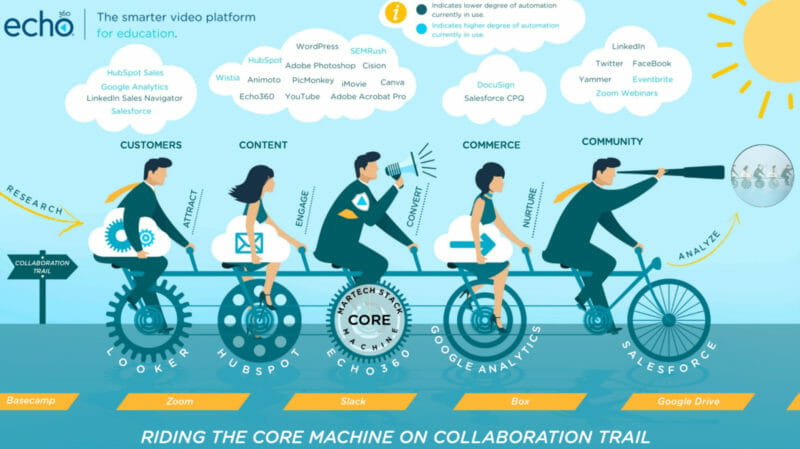
New England Biolabs, a native enzyme producer for life science research with a DNA strand theme
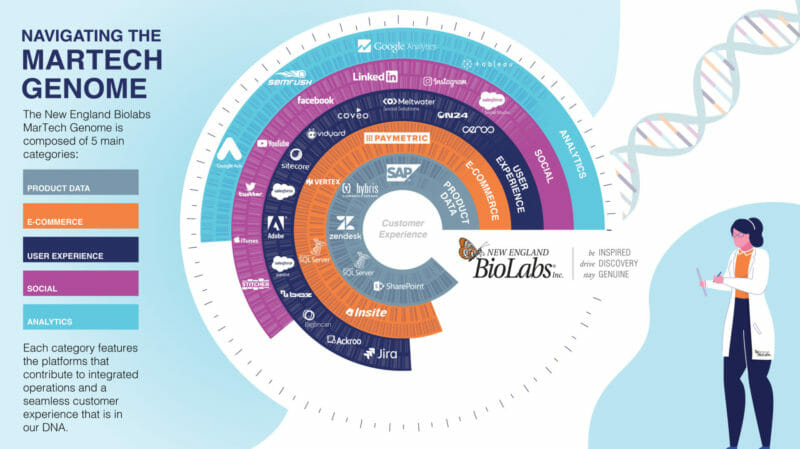
Nexthink, an IT solutions company with a scientific periodic table theme
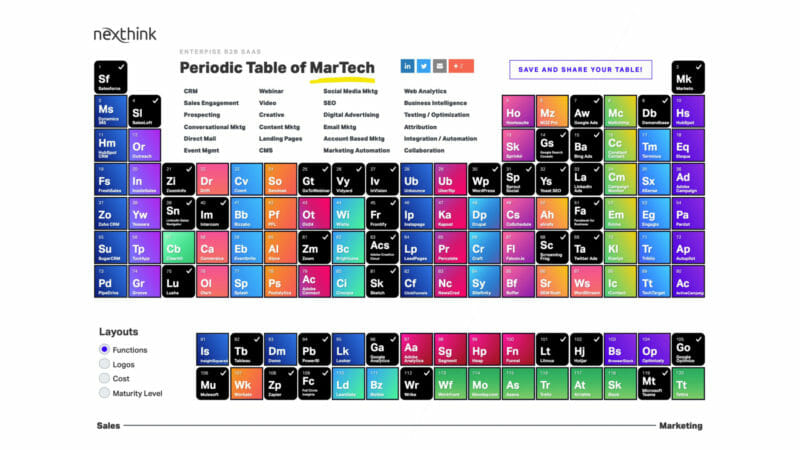
Philips health technology company with a medical vital signs theme
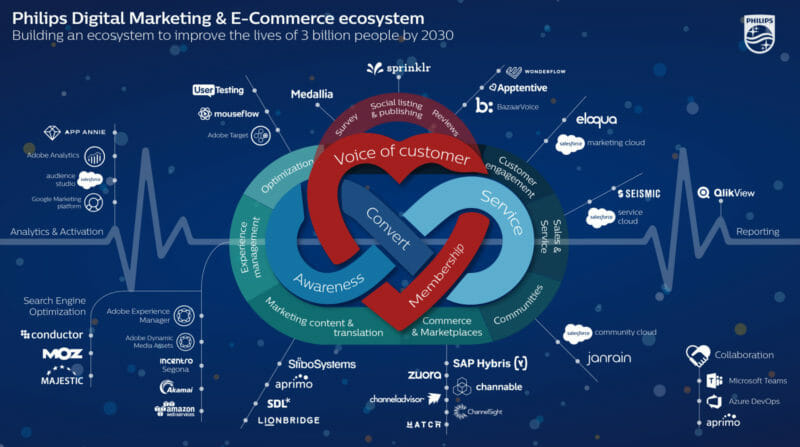
Philips highlighted the ‘voice of customer’ through experience management, marketing content and translation, commerce and marketplaces.
“The way [Philips] took us through the customer journeys and used the exercise as a way to build internal branding and a vision of thinking about this as an ecosystem really stood out,” said Brinker.
PitchBook, a financial data management platform, gets organized
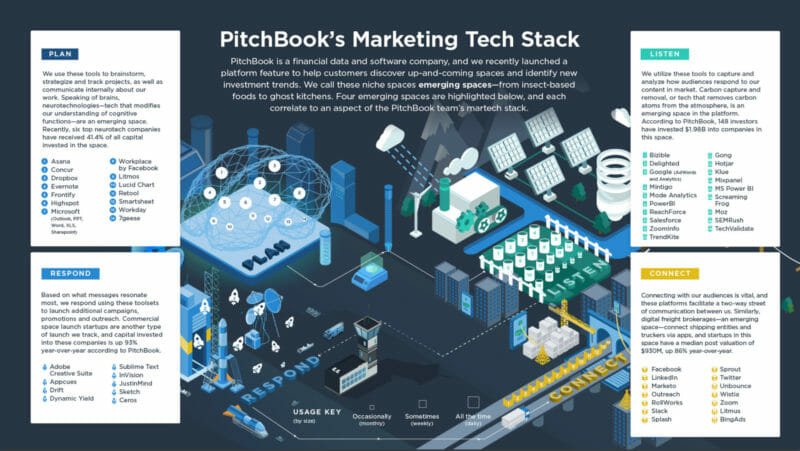
PitchBook organized its martech stack through a rubric of Plan, Respond, Listen and Connect. But it also highlighted how often it used each tool in its stack through color-code to identify daily, regular or occasional use.
“I find these kinds of insights really helpful,” said Brinker. “Because not everything in your stack needs to be something that you use everyday. I like getting a feel of what tools are at the core operational technology level and which ones are used more on a specialized and infrequent basis.”
Poly, maker of communications equipment and software with a space theme
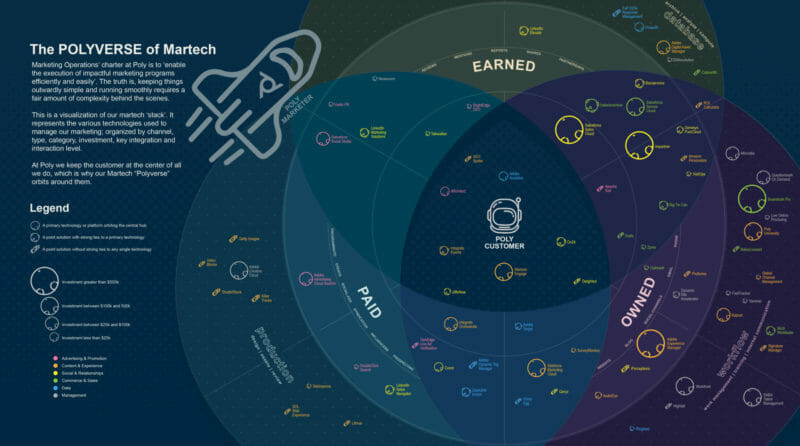
Puppet, a software development company with a corporate logo theme
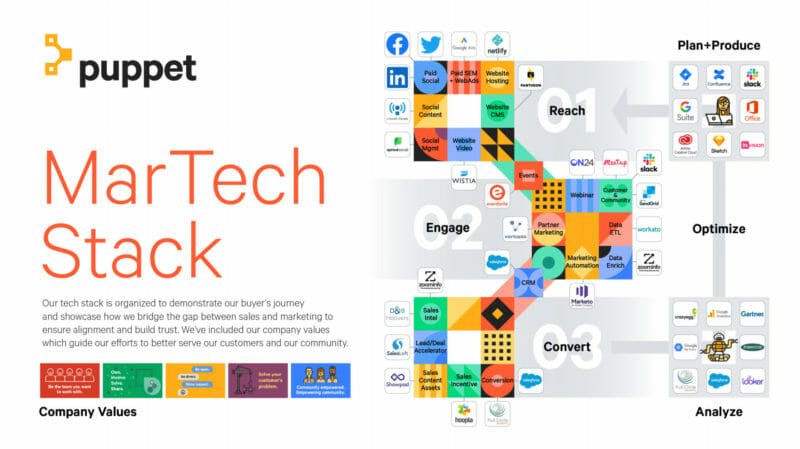
SAS, the large data and analytics software company with a cell and DNA theme
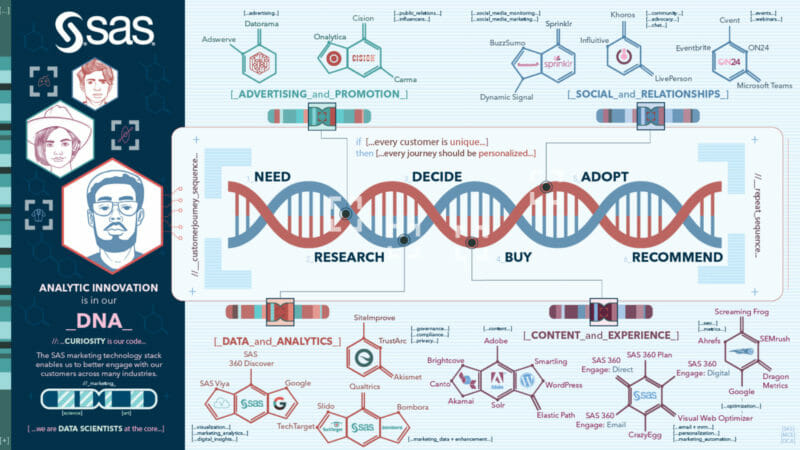
United States Postal Services with a parcel theme
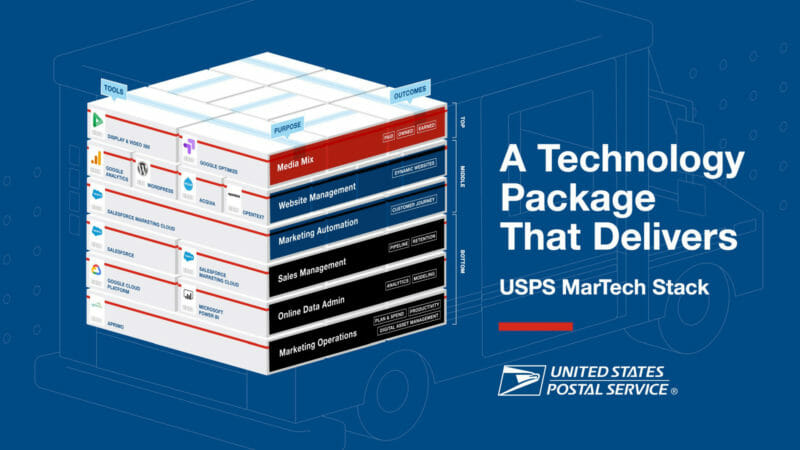
The USPS winning entry used a straightforward parcel-inspired design theme to cover its marketing automation, website management and media mix. These areas were covered under tools, purpose and outcomes.
“[The USPS] has had such a rough year and so many people rely on them for ecommerce and we often forget about that,” said Brinker. “We admire the work they do and they are deeply appreciated.”
How stacks may change
As Davis pointed out in the conversation following the awards presentation, many of the Stackie entries showed martech stacks built with dozens of tools that marketers must manage and orchestrate within their organizations.
But as the economic upheaval tied to the COVID-19 pandemic has disrupted budgets and even staffing levels for many companies, will that disruption be seen in the stacks?
“There’s been a lot of this quote, unquote, digital transformation, happening, and what that largely comes down to is a company’s getting a lot more serious about ‘What are these tools we’re using, the process around it, and how’s it delivering value to us and our customers?’” said Brinker.
That could certainly lead to companies choosing to jettison components of their stacks that aren’t demonstrating that kind of value.
“I still think there’s plenty of room for innovation,” said Brinker. “For marketers to be increasingly more disciplined about justifying the value of a tool is a wonderful, wonderful thing. Yes, we’ll see some contraction in some places. And then new tools experimented in others.”
Congrats to the winners and we’ll see if next year’s Stackie entries bear that out. If you want to see all 51 Stackie submissions, it is linked in the Dig Deeper section under the presentation here (free registration required).



